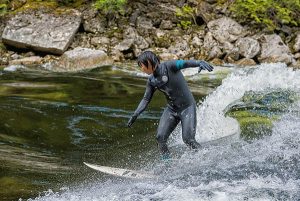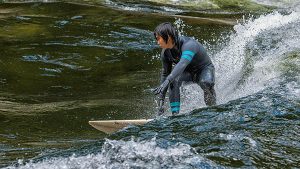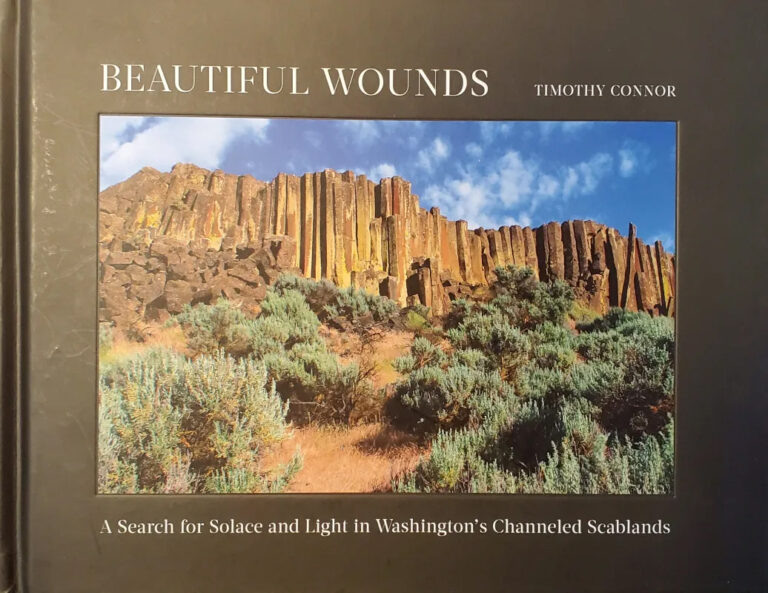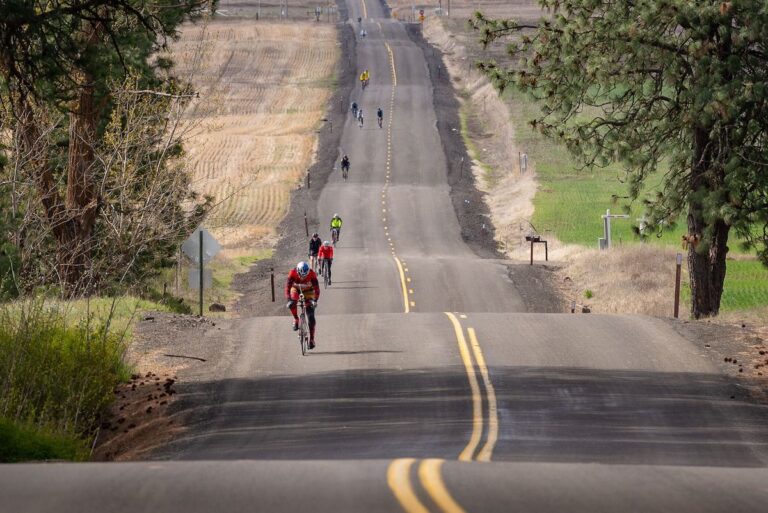Many area whitewater enthusiasts wait patiently every spring for river levels to calm down to the right level to float or surf the Spokane River. Meanwhile, emotions still run high five years after the city’s plans for a downtown whitewater park dried up.
In 2007, nonprofit group Friends of the Falls, which recently announced a friendly merger with the Spokane River Forum, initiated an ambitious plan to create a 400-acre whitewater park that would have included building wave-producing structures beneath the surface of the Spokane River. The group’s goal, which was supported by many local kayakers at the time, was to add a man-made river feature to the river downstream from downtown Spokane that would allow boaters to play, surf and pull-off tricks on otherwise wild and free-flowing waters and serve as a potential urban tourism and economic development tool.
Park advocates eyed two locations in the Spokane River Gorge in particular, although other sites upstream were also considered: Glover Field, which boasted close proximity to downtown and up-close views of the Monroe Street Bridge; and a location by the Sandifur Bridge, which spans the river at the first bend downstream from the falls near People’s Park, which would have required fewer alterations to the river bed to achieve the desired rapids. Friends of the Falls helped secure a $530,000 grant for the park in June 2007 from the state’s Recreation and Conservation Office, and then the sum was matched with $500,000 of funds raised by the group from hundreds of donors.
The park proposal wasn’t just popular with the public: In 2007, the Great Spokane River Gorge Strategic Master Plan won the “Mayor’s Choice” award for excellence in urban design. The report cited in part the plan’s potential for immense economic benefits from tourism.
Advocates successfully navigated a 2009 public comment period, and five-time World Slalom Kayak Champion Scott Shipley of S2O Design was brought in to perform the Spokane River Site Assessment.

But as the RCO grant entered its fourth year, concerns about the proposed park’s impact on dwindling native redband trout populations and their habitat emerged as a serious issue.
Then-Planning Director Leroy Eadie responded by ordering a study on the potential impact to the native salmonid on behalf of the city. In 2011, Avista released a study of redband spawning habitat from Spokane Falls to the Nine Mile Dam. The utility identified 58 habitat sites and 148 spawning sites, the largest of which was at the proposed Sandifur Bridge park location. Although the study suggested amendments to the proposed park design that may have been able to mitigate its impact on redband spawning, the city did not obtain an aquatic lease from the Department of Natural Resources to begin development of the park, and by June 2011, the city parks department had only spent $30,000 of the $530,000 award.
The city then received a six-month extension, but its request for a second extension amendment to the contract agreement was denied by the Recreation and Conservation Funding Board, and, citing a lack of progress, RCO officials rejected an appeal to keep the remaining funds for the project. At the time of its cancelation of the grant, however, RCO officials stated that concerns over potential impact on redband spawning sites played no role in its decision.
Since then, whitewater parks, frequented by kayakers and, more recently, stand up paddleboarders and river surfers, have continued to grow in popularity. Boise just received a 3.5-million-dollar grant to close the gap on their ambitious whitewater park project. To the east, Missoula’s downtown whitewater park on the Clark Fork River serves as a stronghold of the popularization of river surfing, which has origins around the world that date back decades. In large part because of its whitewater park (which will soon have company with a new park in the works), Missoula has consistently been rated as the number-one river town in the United States. Rounding out the runner-up spot is often Spokane.
Whitewater park advocates here in Spokane suggest parks in Missoula and elsewhere have benefitted from a combination of public support and more-favorable regulatory environments, point out that the permitting process in Washington involves 13 different agencies. But they also benefitted in part from fortuitous timing, riding the cresting wave of river-surfing popularity that the Spokane plan just missed. But, like with these man-made river features, there’s always another wave. And another after that.

Former Friends of the Falls board member and accomplished whitewater paddler Travis Nichols, who advocated tirelessly for the park, is sanguine about any future whitewater park on the Spokane. “The positive example that [former Spokane City Parks Recreation Supervisor] Mike Aho imparted on me was the Joe Albi BMX track. We have a thriving BMX culture because that park exists. If you want to be an optimist, you can look at the BMX park to see that you just need the right timing, the right groups.”
Just across the state line from Spokane, Avista recently purchased a 2.8-acre site a half-mile downstream of the Post Falls Dam and established a different kind of “whitewater park” that includes public access and parking at the Trailer Park wave, a natural river wave that is popular with kayakers and paddleboarders when the flows are right, as part of its dam relicensing agreement in 2014. While this addition has been a boon for local whitewater enthusiasts, the addition of a manmade whitewater park with waves built to serve paddlers and surfers at many different river levels would put Spokane on the map along with Missoula and Boise as a modern mountain surf town.
Recalling the very real and legitimate fishery conservation concerns and other issues that, according to those involved, may or may not have played a hand in the demise of this first effort to build a whitewater park below the falls in downtown Spokane, Nichols points out that his loyalty lies with the river itself. “When I reflect back on the whitewater park plan,” he says, “I don’t care about the next evolution of this, I just care about the river. I’m into whatever the community wants to back as long as it’s driving attention to the river.” //












